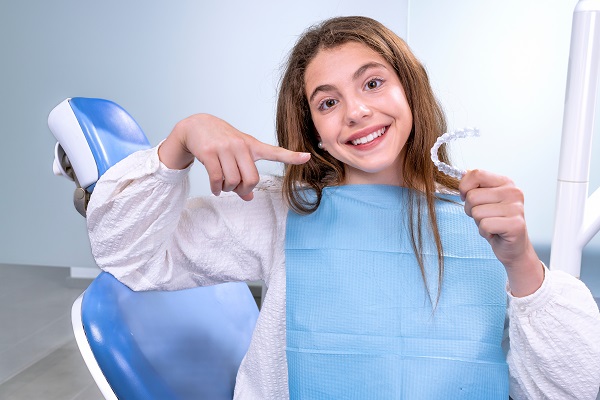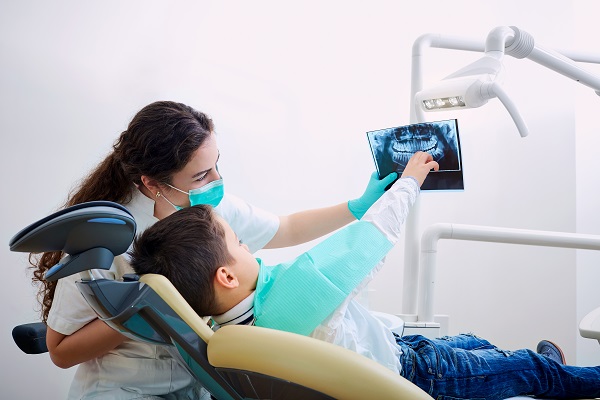How Long Do You Have to Wear Braces?

Braces have been one of the most popular forms of teeth straightening for decades, and many patients achieve a more attractive smile and better oral health overall through treatment. By learning useful information about braces, including how long the process takes, you can make a more informed decision as to whether or not this treatment is right for you.
Useful information about braces
Braces fix a number of orthodontic concerns, including crooked teeth, crowded teeth and various bite complications. The following is everything to know about braces treatment, including what it is exactly, how the treatment process works and what to expect after the braces are removed.
What are braces?
Braces are a form of orthodontic treatment that utilizes metal wires and brackets that are placed on the visible portion of teeth to pull them into a straighter position. They are incredibly effective at treating severe malocclusions, and they can be used to fix various kinds of jaw and teeth alignment complications.
How does the braces process work?
Each patient is different and may have a slightly different experience with treatment. However, most orthodontists follow these five steps with braces treatment:
- Initial consultation
- Dental impression
- Placement of the braces
- Treatment process
- Retainer wear and aftercare
The first step is to schedule a visit with an orthodontist, who conducts an oral examination and discusses the treatment process with the patient. If the patient agrees to the treatment, a dental impression is taken, and the braces are placed on the follow-up visit. After treatment, patients are required to wear a retainer to ensure their smile remains straight in the long term.
How long does treatment take?
The time braces treatment takes varies and depends on a variety of factors, including the severity of the malocclusion at the start of treatment, how responsible the patient is with keeping up with their oral health and following the orthodontist’s instructions and how frequently the patient makes it into all scheduled visits with the orthodontist. However, most patients are required to wear the braces between a year and a half and a little over two years. For less severe malocclusions, treatment may only take a year or even less in some instances.
What happens after braces are removed?
It is important to remember that braces treatment is not over once the braces are removed. It is essential to wear the retainer as directed by the orthodontist. By doing so, patients can ensure their smile stays straight for decades, if not a lifetime, to come. When the braces are removed, patients can also expect a beautiful smile of straight teeth, without all of the metal. There may be some slight discoloration and a bit of discomfort, but the orthodontist can address both concerns promptly.
Talk to an orthodontist about treatment
Feel free to reach out to your orthodontist today to learn more about the braces process and how long it would take you to complete. You can schedule an initial consultation at any time. Your orthodontist will make an effort to answer all of your questions and educate you on the process during the first visit.
Request an appointment here: https://www.drsallysong.com or call The Orthodontic Center Of Wayne - Dr. Sally Song at (973) 696-5220 for an appointment in our Wayne office.
Check out what others are saying about our dental services on Yelp: Types of Braces in Wayne, NJ.
Recent Posts
Even though braces are common among teenagers, getting them is a new orthodontic experience for every patient. Teens and their parents tend to have many questions about braces and other orthodontic treatments for teens, when to get braces, and what having braces will be like. Here are some of the most common questions orthodontists hear…
The primary goal of early orthodontic treatment is to prevent and fix bite misalignments. Several causes, including genetics, the premature loss of primary (baby) teeth, and harmful oral habits (like thumb sucking) may lead to such anomalies. Orthodontic abnormalities might be congenital or occur during early childhood. Straight teeth can reduce the incidence of dental…
Invisalign® has changed how willing teenagers –– and everyone else –– are to start teeth straightening treatments. It provides an alternative to traditional metal braces that is virtually impossible to detect. Invisalign® treatments work the same way conventional braces work, the aligner trays exert a force on the patient's teeth pushing their teeth into better…
Oral health is foundational to good overall health. Through the help of an orthodontist and bite correction, difficulties with chewing or speaking can be overcome. The inability to ingest food or clearly articulate impacts both physical and mental health. Bite correction has the potential to change the course of an individual’s health and wellness.Changes in…


